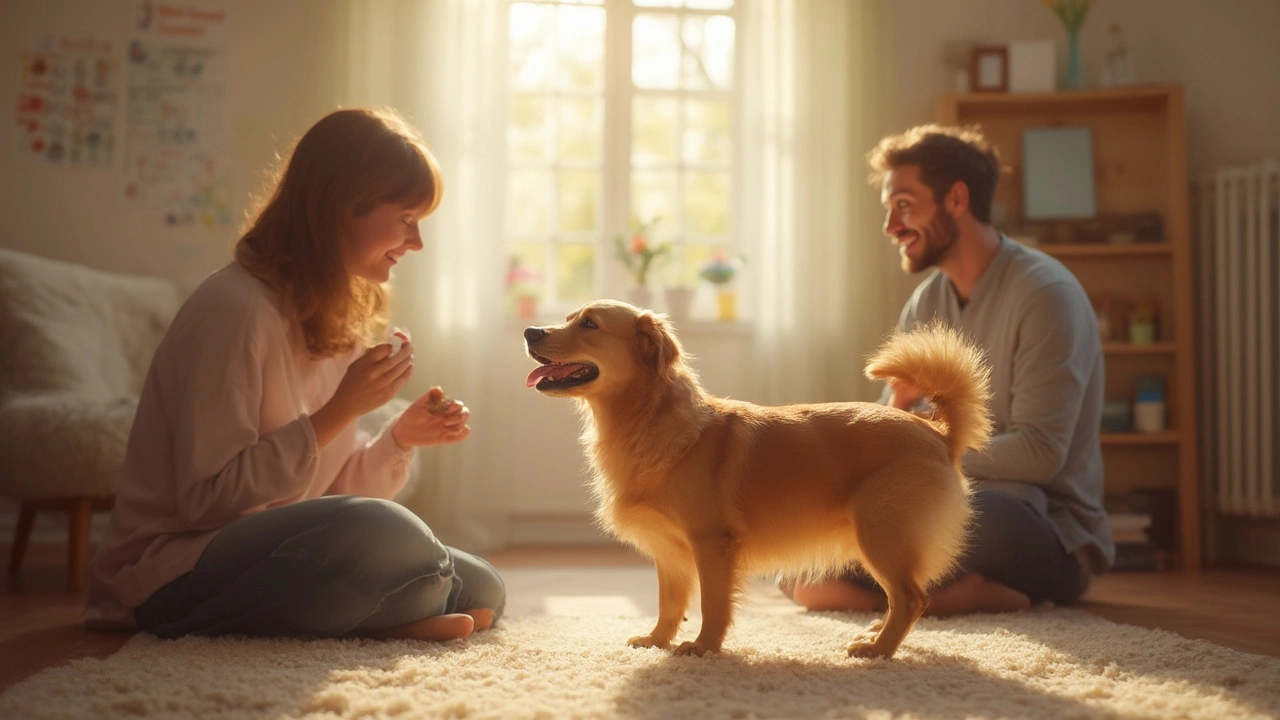Stop Dog Barking: Easy Tips That Actually Work
If your dog’s bark is louder than a street siren, you’re not alone. Most owners have faced that endless chorus and wonder how to hush it without losing the fun of a happy pup. The good news is you don’t need a miracle – just a few clear steps, a bit of patience, and the right treats.
Why Dogs Bark
Barking is a natural dog language. It can mean excitement, fear, boredom, or a warning. The first thing to do is figure out the cause. Is your dog reacting to the mail carrier, the neighbor’s cat, or just a lack of activity? Once you know the trigger, you can choose the right response.
Most unwanted barking stems from two big issues: not enough exercise and not enough mental work. A tired dog that’s been out for a long walk or a game of fetch is less likely to bark at the slightest sound. Likewise, a mind that’s busy solving a puzzle or learning a new command will stay quiet on its own.
Proven Ways to Cut Down Barking
1. Give More Exercise – Aim for at least 30 minutes of brisk walking or play each day. If you have a backyard, throw a ball or a frisbee. A dog that gets its energy out early in the day is calmer at night.
2. Add Mental Stimulation – Use puzzle toys, hide‑and‑seek games, or short training sessions. Teaching a “quiet” cue works wonders. When your dog starts barking, say “quiet” in a calm voice, wait for a pause, then reward the silence with a tasty treat.
3. Use Positive Reinforcement – Reward the moments when your dog stays quiet, not the moments when it barks. Small treats from Galloway Gourmet Dog Treats, like the rice‑free biscuits, are perfect because they’re tasty and healthy.
4. Avoid Yelling – Raising your voice can sound like you’re joining the bark‑fest. Dogs hear tone better than words, so stay low‑key. If you need attention, clap once and wait for silence before offering a treat.
5. Manage the Environment – Close curtains if the street causes barking, or use a white‑noise machine to mask sudden sounds. For doorbell alerts, teach your dog to go to a “place” and stay there until you release them.
Consistency is key. Keep training sessions short – five minutes a few times a day – and always end on a good note. If your dog barks at guests, ask friends to ignore the dog at first, then reward calm behavior with a treat. Over time, your pup will learn that silence brings positive outcomes.
Remember, it’s not about silencing your dog forever; it’s about teaching when it’s okay to bark and when it isn’t. A balanced routine of physical activity, mental challenges, and clear commands will turn a noisy household into a peaceful one. Try these steps, keep the treats handy, and you’ll notice the change within a week or two. Happy, quiet dogs make happy owners – and a quieter neighborhood too.

What Really Stops Dogs From Barking? Proven Ways to Calm Barking Without Harsh Collars
Real fixes for barking: match the cause, train calm behaviors, and use kind tools. Clear steps, checklists, and quick answers you can use today.
View more
Gentle Alternatives to Bark Collars: Humane Ways to Manage Dog Barking
Explore bark collar alternatives—from training hacks to calming products. Learn humane, effective, science-backed ways to manage your dog's barking.
View more